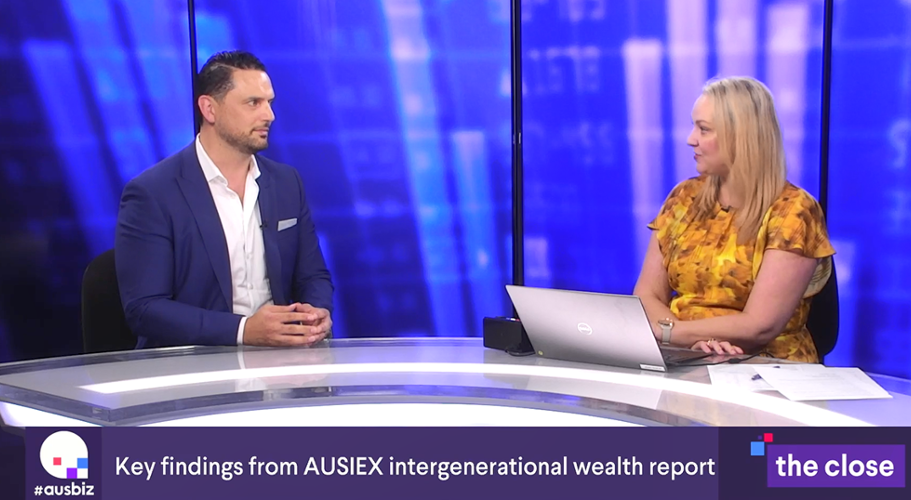Next steps for advisers in intergenerational wealth transfer
It is now well understood that within five years, all Baby Boomers will be eligible for retirement and the Baby Boomer ‘bubble’ will have all but deflated out of the workforce by 2028. This significant demographic shift will have profound consequences for the financial industry and advisers.
An updated paper from AUSIEX, On the Precipice of Change: Preparing for the Intergenerational Wealth Transfer, provides a detailed analysis of the potential impact on the industry and suggests responses that may be required.
A Productivity Commission paper released in 2021, noted that inherited assets currently total about A$120 billion per year in Australia, and this figure is expected to grow to almost A$500 billion per year over the next 25 years.
The same research also found that the average age of inheritors is 50, close to the mid-point of the age bracket corresponding with Gen X, which makes them an important part of the answer to the question about who will inherit the bulk of the baby boomer wealth.
Likely beneficiaries
Other recent research has given additional indications of where money may be directed. The Future of Legacy Giving: Boomers and Beyond – Australia (November 2023), found that Baby Boomers and Gen X felt strongly that it was important to help others in need as well as your own family (55% and 61% respectively) and had a higher expectation that their family will need financial support from them (19% and 38% respectively).
Of arguably greater consequence, there also appears to be evidence that females will be the primary beneficiaries of financial flows from the transfer. Research commissioned by Schroders and McKinsey (UK and US respectively) suggests females will inherit 60% to 70% of the wealth transferred this decade. As women statistically live longer than men on average, it’s not inconceivable they will have full control of their family wealth at some point.
All in all, it seems females are set to play a significant role in how the intergenerational wealth transfer will play out and this will likely have a profound impact on the adviser-client relationship and the advice industry overall. Whether the industry has adapted or is ready to, is a different question.
Initiating conversations
According to The Value Gap, a report from Effortless Engagement, over 70% of clients would like their adviser to guide their children, though it may not be a fait accompli that children will use their parents’ preferred adviser.
With the youngest generations under-indexed in terms of their usage of advice, it would seem that working with clients to extend conversations about transfers to beneficiaries should be a key priority.
For advisers, the rewards appear clear. Australian Ethical found in its 2023 Opportunity Next report, conducted with CoreData, that an overwhelming majority (77%) of advisers who engaged children in wealth transfer conversation, saw an increase in client satisfaction.
All this, and other research, would seem to suggest there is a need for advisers to initiate conversations with clients and beneficiaries early, proactively and as a priority for the practice.
Education directly addresses a general need across generations, particularly for younger beneficiaries. Fulfilling that need, in a manner suited to the preferences of each generation, is becoming an imperative. Accordingly, advisers are increasingly leveraging digital channels to help beneficiaries better understand the transfer and investment process and how decisions will impact them.
Advisers can also take advantage of new client portal and reporting technologies to be better informed as to the composition and performance of their portfolios. This in itself may help strengthen communication and trust between transfer stakeholders.
Technology is key
While the intergenerational transfer of wealth presents a substantial opportunity for advisers to engage new clients and beneficiaries to establish resilient, long-term revenue streams, success is predicated heavily on their ability to add value and serve them profitably.
Naturally, technology is a critical part of the answer, though not the complete answer, to this question.
In just one example, modern and fully featured trading platforms, provide advisers access to the wide range of markets and asset classes required to build bespoke client portfolios in precise alignment with their objectives and risk profiles.
The net effect and arguably a key role of technology through the wealth transfer, is to help address the challenges of communication and trust as root causes of transfer failure, ensuring there is a common and mutually agreed fact-base for stakeholders in order to deliver transfer plans their best chance of success. At the same time, technology can help deliver significant operational efficiencies to the practice, allowing them to navigate the challenges and take advantage of the opportunities our white paper seeks to present.
Adapting to change
The wealth management industry has always adapted quickly to new technologies to improve products and services.
It started with information processing technology for cost and scale, then online technology in the 90’s and mobile technology in the “noughties’’ to improve service and elevate the customer experience.
Our industry has, and will continue to be able to, deal with change. It is just happening faster and with higher impact than many realise.
The older generations are about to leave the system, the younger generations face different challenges than those that came before them, and the transition to innovation in the digital world is continuing apace.
The wealth management industry and equity capital markets are proven at adapting to help the economy find new ways to create capital and increase wealth. It is essential that industry participants become more active in understanding and discussing the changes that are now taking place and engage across the value chain to plan and execute change.
Industry participants need to accelerate their preparations for intergenerational transfer, as the Baby Boomer boom is over.
Download our updated white paper The Precipice of Change for insights into how we see intergenerational change impacting service delivery in the future and the role of technology.

